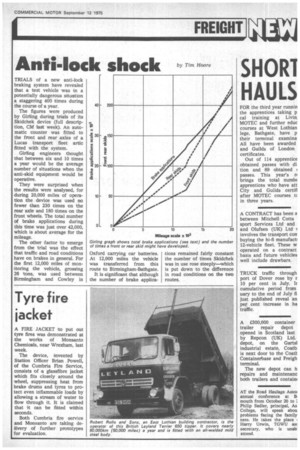Anti-lock shock
Page 25

If you've noticed an error in this article please click here to report it so we can fix it.
TRIALS of a new anti-lock braking system have revealed that a test vehicle was in a potentially dangerous situation a staggering 400 times during the course of a year.
The figures were produced by Girling during trials of its Skidchek device (full description, CM Ilast week). An automatic counter was fitted to the front and rear ;axles of a Lucas transport fleet attic fitted with the system.
Girling engineers thought that between six and 10 times a year would be the :average number of situations When the 'anti-skid equipment would be operative.
They were surprised when the results were analysed, for during 20,000 miles of operation the device was used no fewer than 230 times on the rear axle and 180 times on the front Wheels. The total number of brake applications during this time was just over 42,000, Which is about average for the mileage.
The other factor to emerge from the trial was the effect that traffic and road conditions have on brakes in general. For the first 12,000 Miles of monitoring the vehicle, grossing 26 tons, was used between Birmingham and Cowley in Oxford carrying car batteries. At 12,000 miles the vehicle was transferred from this route to Birmingham-Bathgate.
It is :significant that although the number of brake :applica tions remained fairly constant the number of times Skidchek was in use rose steeply—which is put down to the difference in road conditions on the two routes.
















































































































